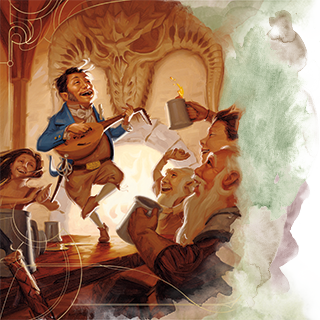
Most see death as an end—you see it as an opportunity. While others shy away from the lifeless, you embrace it, preserving what once was and breathing new purpose into the still. Whether driven by artistry, curiosity, or a deeper connection to the natural cycle, you have spent years honing your craft, skinning, stuffing, and stitching creatures into eternal rest. Some call it morbid; you call it mastery. Your skills grant you an intimate understanding of anatomy, a steady hand, and a mind unfazed by decay. But your work is not just about preservation—it is a way to defy impermanence, to control the inevitable.
What led you to this path? Were you an apprentice under an old master, perfecting your craft in a dimly lit workshop? Did you study death to better understand life? Or is your fascination with the dead a means to an end, tied to something far darker?
- Skill Proficiencies:
Your work with the dead has given you an intimate understanding of both life and its end. Your Medicine proficiency allows you to assess wounds, diagnose illnesses, and determine causes of death with practiced precision. Whether stitching flesh or studying decay, your knowledge extends beyond the living, granting insights others might overlook.
Your Nature proficiency reflects your deep familiarity with the creatures you preserve. You recognize anatomical structures, natural behaviors, and ecological roles, allowing you to identify species, detect environmental anomalies, and understand the forces that shape life—and death. This knowledge aids in sourcing materials for your craft, distinguishing natural deaths from unnatural ones, and deciphering how life’s cycle continues even after death.
- Tool Proficiencies:
Your expertise with a Taxidermy Kit allows you to skillfully preserve, modify, and reconstruct dead creatures. With precise cuts, careful stitching, and the right preservatives, you can restore a lifelike appearance or create something entirely unnatural. This proficiency grants you the ability to identify details in a creature’s anatomy that others might overlook, discern the cause of death with greater accuracy, and even prepare remains for rituals or alchemical uses. Skilled hands can turn death into art—or something far more unsettling.
- Equipment:
Taxidermy Tools & Preserved Creatures
A compact kit filled with the essentials of your craft—razor-sharp blades, fine needles, preserving agents, and delicate wire for shaping lifeless forms. Within its worn case lie a few of your completed works, each a testament to your skill, from a perfectly restored bird to a grotesquely modified creation. These specimens serve as examples of your artistry, tools of your trade, or unsettling conversation pieces, depending on the company you keep. Wherever you go, your work follows—a silent reminder that death is never the end, merely a new beginning in your hands.
Your hands have shaped the dead, not merely as a craft but as an art. Through years of practice and an intimate understanding of mortality, you have gained a reputation among scholars, occultists, and those who seek the truths hidden in lifeless flesh. With a glance, you can discern whether death came naturally or through unnatural means, seeing the echoes of a life ended. Some view your work with reverence, seeking your expertise; others whisper of the unnatural touch you leave behind.
Beyond preservation, your skills allow you to modify and manipulate remains in ways few dare to attempt. Whether restoring a fallen beast to a lifelike state, preparing bodies for unknown rituals, or crafting unsettling but intricate displays, you bridge the boundary between death and legacy. The dead may not speak, but through you, they still have a story to tell.









Comments